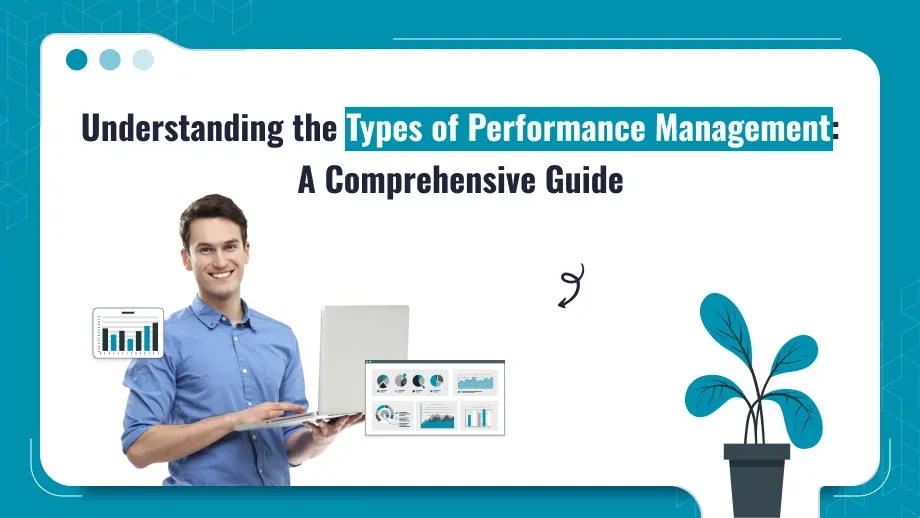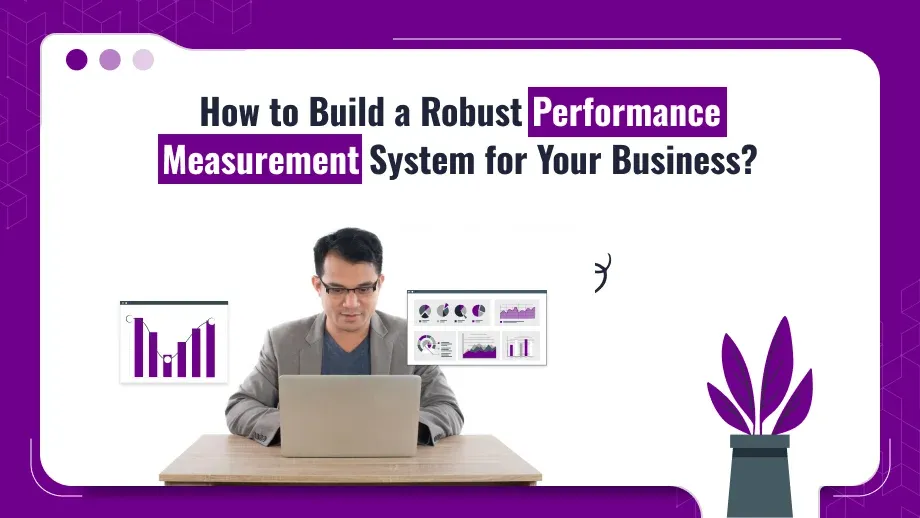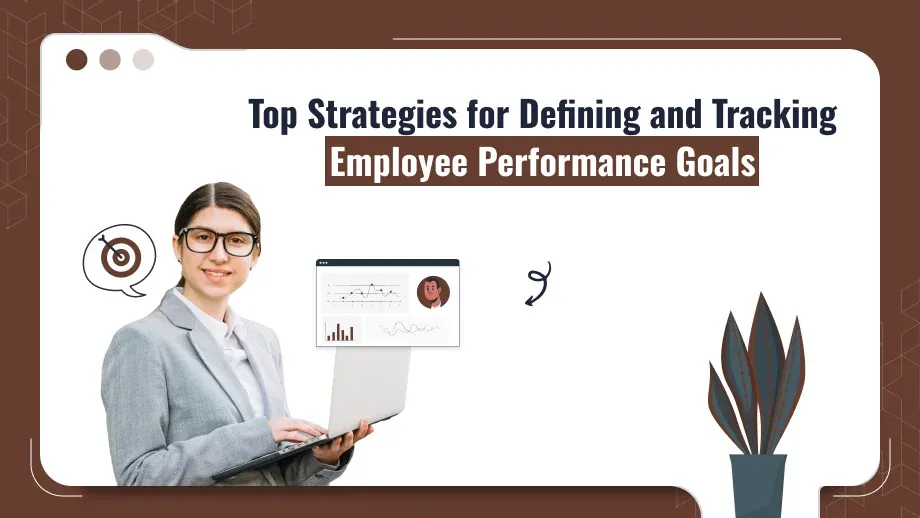
In the current business environment, businesses are becoming more conscious of the necessity for an effective performance management system that can increase employee satisfaction, improve productivity, and ensure that every employee’s contributions are aligned with goals of the business. Did you know that there are types of performance management systems created to enhance efficiency?
What is Performance Management?
The process of performance management is a planned approach that assists organizations in evaluating the effectiveness of, enhance, and control employees’ performance. It involves setting goals for employee performance as well as monitoring progress, offering feedback and conducting assessments to make sure employees are in alignment with the objectives of the company. The goal is to promote a culture of continual development and the obligation to perform.
Why is Performance Management Important?
The management of performance plays an essential part in the success of an organisation. Below are some advantages of implementing a successful process for managing performance is essential:
- Alignment of Goals: makes sure that each employee’s performance is aligned with the larger goals of the company.
- Training and Development for Employees: By receiving regular feedback and guidance, employees are able to acquire new abilities and boost their efficiency.
- More Engagement: Employees who get regular feedback tend to be more enthusiastic and motivated.
- Engagement: A well-designed performance management helps to improve employee satisfaction and retention, by encouraging the culture of acknowledgment and development.
Types of Performance Management Systems
1. Traditional Performance Management
- Summary: This process typically depends on annual reviews and formal assessments. Employees are rated against set guidelines, with the majority of them focusing on the quantitative aspects of.
- Benefits: Gives you a structured feedback, and assists in identifying points for improvement.
- Problems can lead to an absence of involvement and motivation. Feedback is not frequent and usually arrives too late for significant changes.
2. Continuous Performance Management
- The overview: An method that focuses on continuous feedback, and frequent check-ins with the employees and managers. This technique allows for real-time assessment and alterations.
- Benefits: Improves engagement of employees and permits immediate course corrections. It also fosters the culture of constant improvement.
- Problems: requires a major change in culture and commitment by management to prioritise continuous feedback.
3. 360-Degree Feedback
- Overview: This strategy takes feedback about performance from a variety of sources such as peers or subordinates, as well as supervisors. This provides a complete assessment of the performance of employees.
- Benefits: Provides multiple views on the strengths of an employee as well as areas of improvement improving professional and personal development.
- Problems: Feedback is unreliable and require cautious management in order to prevent any negative effects on morale.
4. Management by Objectives (MBO)
- The process of setting goals that allows employees and managers to collaborate establish measurable goals. The performance of employees is evaluated in relation to the achievement of these objectives.
- Benefits: aligns personal goals with the organizational goal in a way that encourages accountability, and puts the focus on outcomes.
- Problems: The ability to succeed depends on clear goals that might not take into account unexpected issues or changes to priority.
5. Behaviorally Anchored Rating Scales (BARS)
- Overview: This approach incorporates quantitative and qualitative evaluations with specific examples of the behaviors that are representative of the various levels of performance.
- Benefits: Increases the objectivity of appraisals of performance, and aids employees recognize the traits that contribute to successful outcomes.
- Problems: The process of developing and maintaining the rating scale takes some time and energy, while employees might require training to be able to comprehend the criteria for evaluation.
6. Self-Assessment
- Summary: Employees assess their own performance by reflecting about their achievements, the challenges they face and areas of improvement. This approach can be paired with assessments by managers to provide greater insight.
- Benefits: Helps to reflect on self and individual accountability, creating the feeling of taking ownership for the performance.
- Problems: Self-assessments may be untrue, since employees could underestimate or overestimate their contribution.
Are you prepared to improve the performance management approach used by your company?
Find the finest software and systems for your requirements.
Performance Management System Examples
In analyzing the various types of performance management when evaluating performance management systems, it is helpful to study actual examples of how they work within different businesses. Below are some examples of these systems working:
- Example1: Traditional Performance Management:
A large manufacturing firm conducts annual reviews for employees to gauge their performances. They utilize standardized form and metrics that assess efficiency, work quality as well as adherence to security standards. Although this is a solid system, many employees are disengaged because of the lack of frequent feedback.
- Example 2: Continuous Performance Management
Tech startups adopt an ongoing performance management program which focuses on regular, one-on-one checks between management and employees. The app permits employees to establish weekly goals, monitor their progress, and then receive immediate feedback. This has resulted in an increase in engagement as well as improved cooperation among teams.
- Example 3: 360-Degree Feedback
A consultancy firm has the 360-degree feedback method where employees are able to receive feedback from customers or supervisors. This system provides employees to learn through multiple angles, which leads to a well-rounded plan for personal growth.
Developing a Performance Management Strategy
Making a sound performance management strategy is vital to the efficiency of any program you decide to use. These are the steps you must follow to design a powerful plan for managing performance:
- Establish clear goals: Begin by delving into what you wish to accomplish with your system for managing performance. This might include increasing the engagement of employees, increasing productivity, or aligning personal objectives with the goals of your organization.
- Select the appropriate metrics: Pick measures that accurately gauge results against your goals. They could be quantitative measures such as sales figures or more qualitative measures such as employee satisfaction ratings.
- Integrate Feedback Loops: Set up periodic feedback processes to ensure that employees get prompt and positive feedback. It could be through periodic check-ins or performance reviews as well as small-scale feedback gatherings.
- Make sure to invest in training: ensure that employees and managers have been trained to implement the management of performance efficiently. It is important to know how to set objectives as well as give feedback and evaluate.
- Use Technology: You should consider utilizing technology to simplify the processes of managing your performance. A good performance management program is able to automatize many elements of tracking performance, making it much easier for managers as well as employees to remain on the same page regarding the goals and their advancement.
Best Performance Management Software
Selecting the best software for managing performance can greatly improve your company’s performance management approach. These are the best performance management software alternatives currently available
- Superworks : It is a well-known brand for its intuitive interface as well as its robust capabilities, Superworks offers comprehensive tools to set goals, monitoring performances, and offering feedback. Superworks seamlessly integrates with other HR software which makes it a great alternative for businesses who want to simplify the management of their employees’ performance.
- 15Five: This program is focused on ongoing types of performance management and engagement of employees. It offers the tools to conduct weekly checks-ins along with performance reviews as well as recognition. It helps businesses to create a culture of improvement and feedback.
- Lattice : is a platform that combines the management of employee performance with engagement tools that allow organisations to set objectives as well as provide instant feedback and conduct reviews for performance all within one system. Its easy-to-use interface and flexible options make it an extremely popular choice by HR professionals.
- Workday: This full HR system includes management of performance among its primary capabilities. workday enables organizations to establish objectives, monitor performance and analyse employee information to make strategic choices.
- Reflektive: This program emphasizes the continuous evaluation of performance and provides real-time management. Reflektive lets managers and employees to have ongoing discussions about their performance, which makes it much easier to respond to changes in business requirements.
Implementing Your Performance Management System
When you’ve selected the form of system to manage performance which is best suited to your company It is crucial to put it into place it in a way that is effective. The following are essential steps for successful implementation
- Make the Change known: Educate every employee about the new management of performance as well as its advantages. Transparency is essential to gain the support of all levels within the company.
- Define roles and their responsibilities : Then, assign specific roles that will be in place, for example, those who manage the system, instruct employees, and keep track of the progress. A clear understanding of the responsibilities can streamline the procedure.
- Configure the System: Set up the system for performance management based the needs of your company. It could involve customizing the measures, creating evaluation forms and linking the current HR system.
- Conduct training sessions: Offer complete training to managers and employees about how to implement the management of performance efficiently. It is important that they are aware of the best way to set goals, offer feedback, and also conduct assessments.
- Start and monitor: Once the system has been set up and you have it running, make sure to launch it across the organization. Check its types of performance management and use as well as be ready to adjust it as needed in response to feedback from customers.
Measuring Success and Continuous Improvement
Once you’ve established your system for managing performance you must measure its effectiveness and constantly enhance the effectiveness of it. This is how you can do it:
- Gather Feedback: Frequently request feedback from your users on their experiences with the system for managing performance. Utilize focus groups, surveys or interviews with one-on-one participants for gaining data.
- Examine Metrics: Determine if your performance management program has met the goals that you established at the start. Examine key indicators including employee engagement ratings along with productivity levels as well as turnover rates to determine the effectiveness of your system.
- Changes to the System: Utilize the feedback and results of the evaluation to pinpoint areas of improvement. Be open and flexible to adapt the process or system in order to better serve the requirements of your business.
Conclusion
Knowing the various different types of performance management tool accessible is vital in organizations that want to maximize employees’ performance, and ultimately drive growth. When you select the best strategy, you’ll be able to establish an environment of accountability, constant improvement and satisfaction. The management of performance isn’t just something you do, but an approach that will take your company’s performance to new levels.
If you’re looking to improve the efficiency of your management take a look at implementing a strategy that is compatible with your company’s requirements. In this way you will be able to increase the productivity of your employees, streamline processes and reach your goals in business with more effectiveness. By investing in the top software for managing performance will not simply streamline processes, but also create meaningful improvement within your business.






